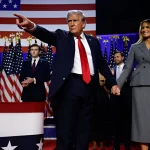Introduction
Ohio will not be different when it comes to judge blocks ohio election law, which frequently attract legal struggles when it comes to the rights of the voters. In the recent past, an Ohio election law was restrained by a judge, and this raised concerns among the public as well as voters, Lawyers and analysts. It brings new important issues to the agenda as to the proper role of the judiciary, admissibility of the existing election legislation, and prospective outcomes of subsequent elections. In this post, we will discuss effects of similar judgments; pros and cons of employing restrictive election laws; and, implications to Ohio voters.
The Court Intervention in State Laws Governing Elections
When state election laws are involved, judicial intervention is capable of making major changes to electoral landscape. Judges that prevent or enforce laws are central to the management of elections because the duties assigned include managing elections. In Ohio they have been common with the courts sometimes assessing the conformity to federal laws and constitution of the Ohio state legislation. Judges are the sentinels of the voters as it relates to the rights of the voter and cancellation of legislated rights by legislative means. Educationally, judicial decisions have defined future legislative activities and instant impact on voters and their rights on voting.
Five Main Constitutional Objections To authoritarian Laws Regulating the Election Process
In this regard, restrictive election laws may be a subject of constitutional litigation. The primary reason is that they are predjudicial to certain classes of voters as to constitute a violation of section 1 of the Fourteenth Amendment. So, there are concerns that recent election laws in Ohio could potentially suppress the votes of voters including minorities and the poor. Such laws are evaluated based on certain principles including the ability of the state to show that the laws are necessary to address a compelling state interest and that they do not have the effect of duplicating justified regulation in a way that under masse suppresses voting rights.
Pre-2016 Election Law Influence on Ohio Voters.
In its previous years of Election, the electorate laws of Ohio have been responsible for voter turnout and participation. For example, those laws that made registration of voters easier also resulted to higher turn up of voters.
However, coercive measures can reduce voters’ turnout by putting up hurdles that a voter has to overcome. Looking at previous elections we see certain trends regarding the various laws applied and this goes a long way in determining the outcomes of today’s regulations.
A comparison of Election law in Ohio to other states
Policies structure showing Ohio’s election laws and other states’ laws can be used to compare accessibility and security. Though some of the states have adopted mail in voting and increase the period of early voting, Ohio’s policy approach is relatively more cautious. Some have said that Ohio has the least accommodating laws, while others said they help maintain the credibility of elections. It is important to look at these permutations when trying to appreciate the role of Ohio and it’s contribution to the unrest in the election law in the US.
Federal Court’s Position in his Evaluation of State Election Laws
State election laws are subject to federal oversight because federal courts review the laws in question to indentify any violations of the federal constitution. The laws in Ohio have regularly attracted the attention of the courts, which analyze their effects on voters’ rights. A system of checks and balances exists because the federal government supervises state governments to ensure citizens’ constitutional rights are not violated and fundamental equilibrium between two governments is achieved.
Some Effects of Court Decisions on Ohio’s Law Making Process
Ohio election laws, therefore, have and will continue to affect future legislative processes based on court’s decisions. It also creates a signal to lawmakers whenever courts strike down laws, regarding which type of regulation is acceptable. It may be used to alter laws that have been previously introduced or conceived of new changes that will be made to address electoral concerns with regard to judiciary levels of compliance. They also shape the attitude of the people and may spur campaigns for the enactment of further friendly voters.
These reflections of municipal legal challenges off negative national trends indicate compliance with national sentiments, as follows:
Litigation as to Ohio’s election laws is not an isolated occurrence but is indicative of emerging national conflicts concerning the availability of the vote and election integrity. Currently, there is an increased consciousness and enamour for equal voting rights all across the country.The legal skirmishes in Ohio is an extension of similar fights in the broader fight for democracy and against such attempts.st elections reveals patterns in how different laws impact voter behavior, providing insights into the effectiveness and fairness of current regulations.
Comparing Ohio’s Election Laws with Other States
Ohio’s election laws can be compared with those of other states to assess accessibility and security. While some states have implemented mail-in voting and extended early voting periods, Ohio has been more conservative in its approach. Critics argue that Ohio’s laws could be more inclusive, while supporters claim they ensure election integrity. Understanding these differences helps contextualize Ohio’s position in the broader national debate on election law.
Federal Court’s Role in Evaluating State Election Laws
Federal courts play a crucial role in reviewing state election laws, ensuring they comply with federal standards. Ohio’s laws have frequently been subject to judicial scrutiny, with courts assessing their impact on voter rights. Federal oversight acts as a check on state power, protecting citizens’ constitutional rights and maintaining the balance of power between state and federal governments.
Implications of Court Rulings on Ohio’s Legislative Process
Court rulings on Ohio’s election laws have significant implications for future legislative processes. When courts block laws, it sends a message to lawmakers about the boundaries of acceptable regulation. This can lead to revisions in proposed legislation or inspire new reforms aimed at achieving compliance with judicial standards while addressing electoral concerns. Such rulings also influence public perception and can drive advocacy for more voter-friendly policies.
Reflecting National Trends and Concerns in Legal Challenges
Legal challenges to Ohio’s election laws reflect broader national trends concerning voter rights and election integrity. Across the country, there is heightened awareness and activism around ensuring fair access to voting. Ohio’s legal battles are part of larger narrative about protecting democracy and countering efforts.
He deals with what he regards as the most objectionable provisions of Ohio election laws.
While Ohio is well known for several provisions of its election laws some of which have been challenged in legal courts. These include Voter ID laws that incr ease the difficu lty of regi stering and voting onlpine restrictions on absentee voter Voting rights restric on for voter registration drives. Consequently, the results of these challenges are diverse, some of the provisions are implemented while some others are invalidated. Key considerations when mapping out the legislation include ascertaining which provisions enjoyed much debate and which of these the judiciary has impacted most.
There is always tension between security and accessibility when it comes to voting systems.
Recent studies have assessed the proportion of security and the right to the vote in the current election laws of Ohio. Judges determine if measures aimed at maintaining purity of the electoral process for instance the requirement of production of identification proofs by a voter exaggerate the voting impediment. The balance between protecting elections from fraud while preserving the sacred rights personalised by the constitution is the main difficulty. Such regulation is ensured by judicial scrutiny so that equal value of both aspects, namely the electoral process and voters’ access, is preserved.
Possible Reforms in Connection with Judicial Decisions
As a result of the judicial actions in Ohio, different measures of reform have been recommended in the interest of election laws. These are featuring in the allowances of increasing the days of early voting, extending and easing the procedures of registration exercise and improving the voter educative campaigns. Intended to respond to specific issues pointed out by courts these reforms envision a non-violent and responsive electoral environment which values both security and accessibility. Special interest groups as well as policymakers are still Struggling to ensure that new changes which reflect the prevailing trends in the legal environment and the electorate in Ohio are instituted.
Final Thoughts
The recent action of preventing an Ohio election law backs the continuous fight between electoral purity and efficiency of the vote. It is important for Ohio’s voters, legal scholars, political scientists and pundits to appreciate the complexity of intervention, constitutional grounds, and historical precedents. But as the state goes through these impediments the chance for positive reform is still within its grasp. This way, people of Ohio can contribute to the creation of a more equitable electoral process.








